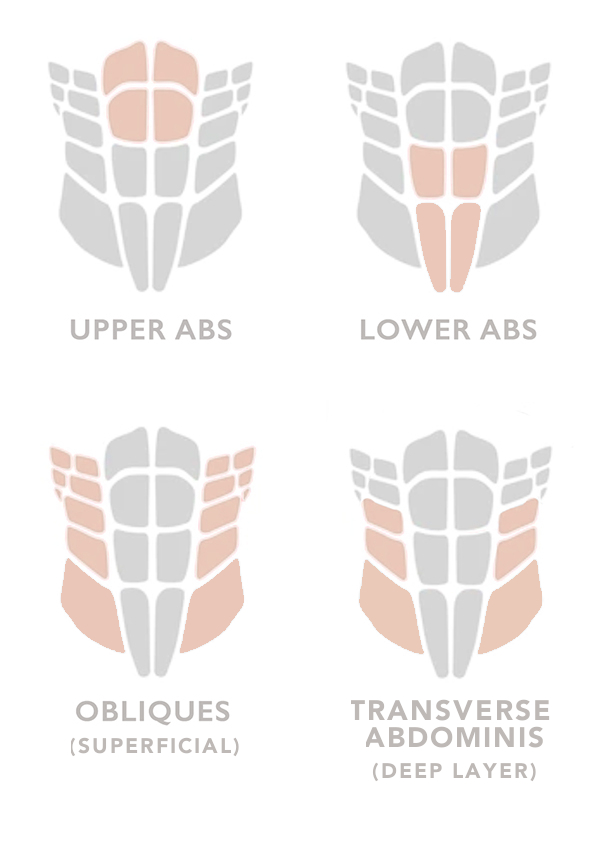The abdominal muscles are located on the front of the body between the ribs and the pelvis. The main muscle groups that make up the abs are:
Rectus abdominis (upper + lower abs). This muscle is located at the front of the torso and is responsible for ab definition. Its main function is bend the torso, in other words to bring the rib cage and hips closer together (trunk flexion). For the purpose of targeting the recuts abdominis with exercise, this muscle is sometimes divided into the upper and lower abs.
Internal & external obliques (side abs). The external and internal obliques are located on the sides of the midsection. The internal obliques lie beneath the external obliques. These muscles are responsible for rotating trunk, as well as bending the torso to the side.
Transverse abdominis (deep abs). This is the deepest of the abdominal muscles. It wraps around the torso like a corset and cinches in the waist. Its main function is to stabilize the core, to help hold the organs inside the trunk in place, and to maintain internal abdominal pressure.


